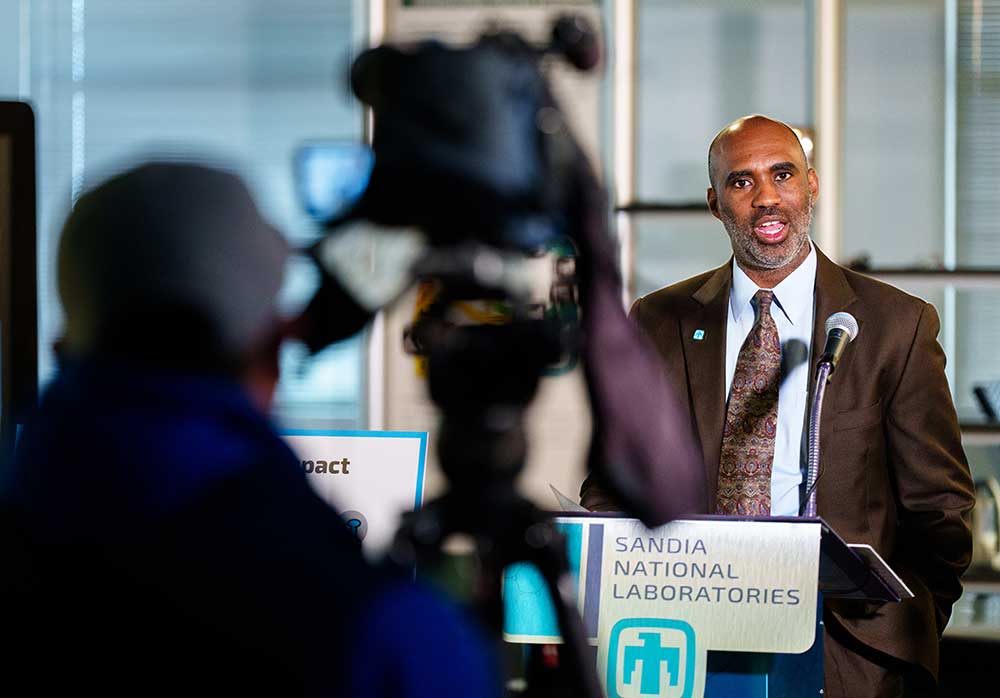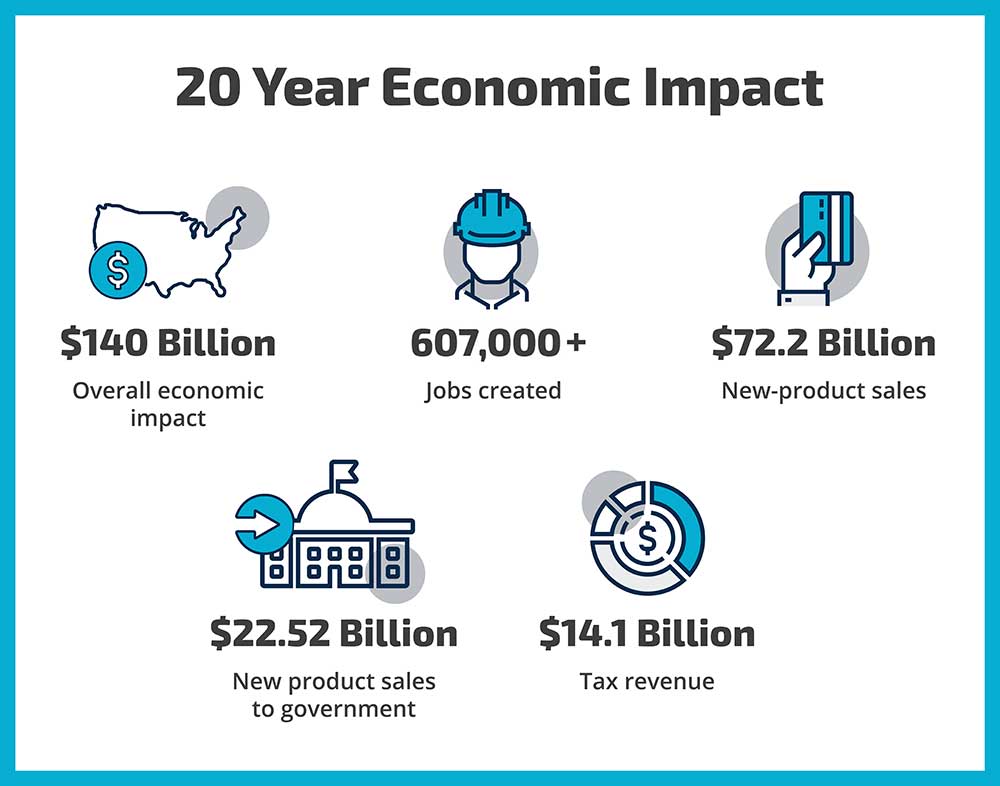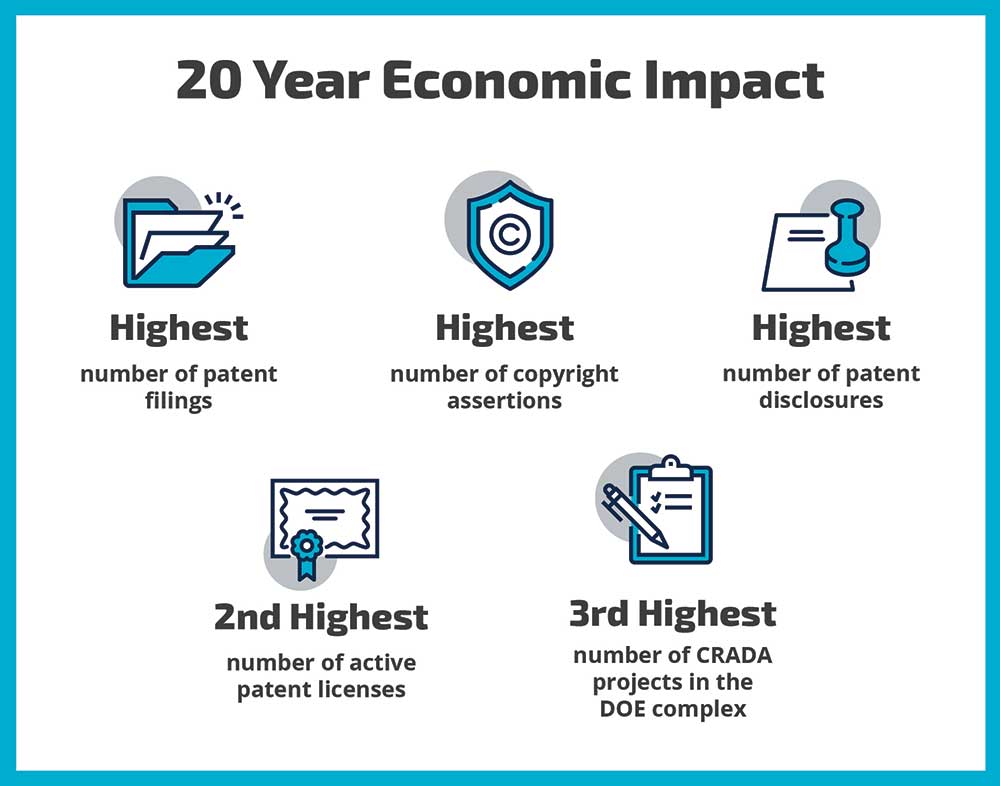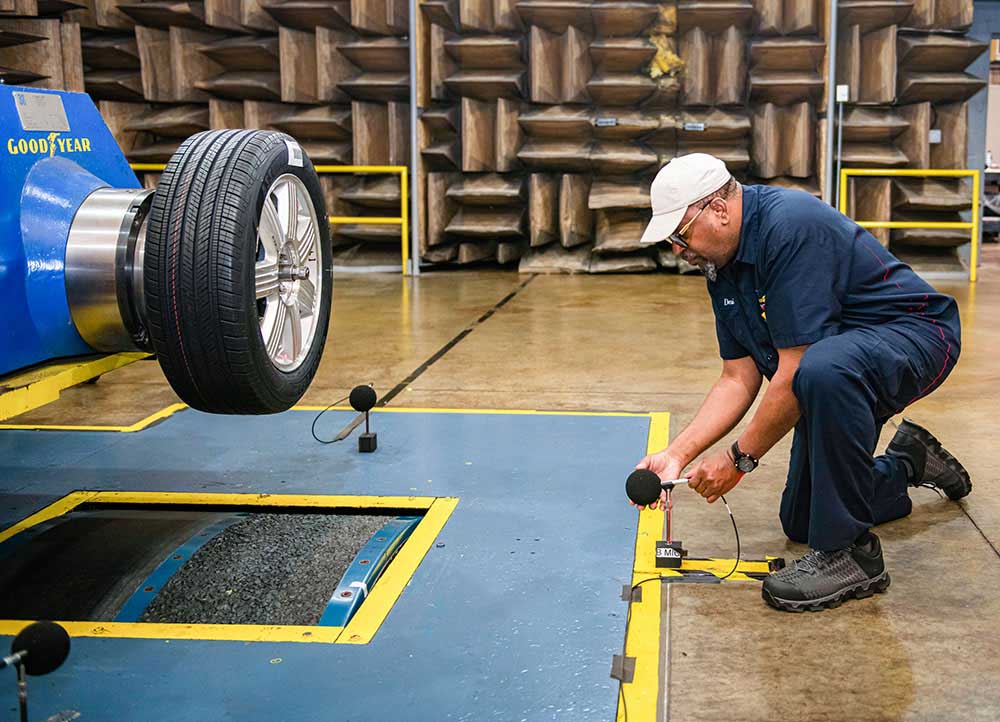Yes, that’s billion with a B

To say that the technology and products Sandia researchers have helped imagine, innovate and industrialize have had a massive impact on the country would be an understatement.
Two studies commissioned by Sandia and NNSA show that work at the Labs has had an $140 billion economic impact since 2000. That is particularly significant considering it spans just two decades, less than a third of Sandia’s 75-year existence.
“I am very proud of how Sandia excels in fulfilling its technology transfer mission to deliver economic impact to the U.S.,” Business Development senior manager Mary Monson said. “Sandia’s contribution of $140 billion over 20 years makes it a leader among Department of Energy laboratories.”
Impact in dollars and cents

The two studies conducted by TechLink, a federally funded technology transfer center at Montana State University, show: $140 billion in overall economic impact, $72.2 billion in new-product sales, $22.52 billion in new-product sales to the government, $14.1 billion in tax revenue and about 607,000 jobs created.
The studies examined Sandia’s Cooperative Research and Development Agreements and patent license agreements between 2000 and 2023, assessing how they translated into actual products, sales, tax revenue and jobs. This benefits the national economy, improves the nuclear weapons stockpile for the U.S. and international allies, and supports NNSA missions.
“The nuclear security enterprise is a treasure trove of commercializable technologies, and Sandia National Laboratories stands apart in its efforts to bring products to market,” said NNSA’s Office of Technology and Partnerships acting Director Jahleel Hudson.
Cooperative Research and Development Agreements and patent license agreements
Cooperative Research and Development Agreements and patent license agreements are two ways Sandia helps move its technology to industry.

The cooperative agreements are contractual vehicles that enable federal labs and outside parties to jointly develop new technologies, leaning on each other’s expertise and resources.
The patent agreements are legally binding contracts that give licensees, usually to for-profit corporations, the right to make, use and sell federal government-owned inventions.
Sandia has excelled in these agreements. According to fiscal year 2022 DOE Office of Technology Transitions data, Sandia had:
- The highest number of patent disclosures and filings, and copyright assertions.
- The second highest number of active patent licenses.
- The third highest number of Cooperative Research and Development Agreement projects in the DOE.
A boost for local communities
In recent years, Sandia has accelerated efforts to move innovation to industry through the creation of new programs. One such program is the DOE Boost Platform, led by Sandia and external partner FedTech, which partners with 13 other DOE labs. The goal is to bring national labs, startups, academia and entrepreneurs together to find solutions to community-based energy challenges, especially in rural areas.
Sandia is already negotiating three licenses under this program, including one with a team representing interest in New Mexico and Alaska.
“They are looking to use Sandia’s algae technology in Santa Fe’s municipal water system,” Mary said. “It highlights the fact that communities want to work with people and entrepreneurs from their community to focus on the challenges they’re facing. It’s kind of like the whole impetus behind Boost.”
Expanding use of clean energy technology
Another successful program is the C-4 Partnering Model. The four C’s stand for colocate, collaborate, community and communicate. Sandia is one of seven labs that works with regional partners to develop a local commercialization ecosystem for manufacturing clean energy technologies focused on collaboration and rapid technology development.
Supporting the semiconductor sector
Through Semiconductor Sector S2-EDGE, or Expedite and Develop Game-Changing Exemplar, Sandia collaborates with four other labs that use feedback from industry to inform innovations in semiconductor technologies and next-generation microelectronics before moving them to market.
These programs are just part of the reason Sandia’s tech transfer numbers are so successful, Mary said. “We are committed to bringing new programs to our ecosystem that researchers can take advantage of to move labs-developed technologies to the market.”
Where rubber meets the road

This massive economic impact has been fueled by long-lasting partnerships, like one with The Goodyear Tire & Rubber Co. In the early ’90s, the tire company turned to Sandia for its expertise in advanced computational mechanics, simulation and structural dynamics to improve tire performance, reduce product development times and improve manufacturing methods.
Thirty years later, that partnership continues. One of its latest projects is a virtual way to develop a quieter tire without the need for physical testing. Over the years, the partnership has also resulted in the development of the Assurance TripleTred, a visually distinctive all-weather tire, and the development of Virtual Flat Track, which uses computer simulations to test a virtual tire on a virtual test track simulating actual road conditions.
All this technology has roots in Sandia’s nuclear deterrence mission.
Powering New Mexico
Sandia is also involved in ongoing work with the Public Service Company of New Mexico, widely known as PNM. In 2020, the two formalized a Cooperative Research and Development Agreement to help PNM develop a more resilient, clean electric grid and meet a 2040 carbon emissions-free target.
The partners are developing new analytical approaches, capabilities and technologies to help PNM use distributed and centralized sources of clean energy. Sandia and PNM will explore different types of storage, such as batteries, thermal storage and hydrogen that can provide grid resilience. Together, the partners can work to test solutions in real-world scenarios.
Repurposing technology for the market
Last year, Sandia supported partner Advanced hCMOS systems, an Albuquerque based-startup, to commercialize the world’s fastest burst-mode X-ray camera, which was created at the Labs. The company is co-founded by former Sandians Liam Claus and Marcos Sanchez, who took advantage of the Entrepreneurial Separation for Technology Transfer program to start their own business.
While the technology was developed to support Sandia’s nuclear power and fusion work, there are many other applications, including astrophysics research, laser design and materials science.
For example, researchers are looking to use it to develop stronger glass screens for cell phones. They need to understand how glass fractures, and this technology will allow them to study fractures at extremely high speeds.
The company is already serving government customers and is working on ramping up production through a DOE Phase I Small Business Innovation Research Grant and a TRGR Technology Readiness Initiative project.
75 years of impact
With 75 years of innovation behind it, Sandia plans to make an even bigger impact in the years ahead.
Commercialization of lab-developed technologies has long been part of Sandia’s mission, but it is also a reminder that this national lab is made up of some of the brightest minds in the country. Through these partnerships and programs, this work can make its way into the real world and affect everyday lives, which is something that makes Sandians and NNSA proud.
“Over the last 20 years, Sandia’s economic impact has generated billions of dollars, created half a million high-paying jobs, and positioned the United States as a leader in technological innovation,” Hudson said. “NNSA’s Technology and Partnerships Office values Sandia’s extraordinary achievements and is delighted to have commissioned the study to recognize this success.”